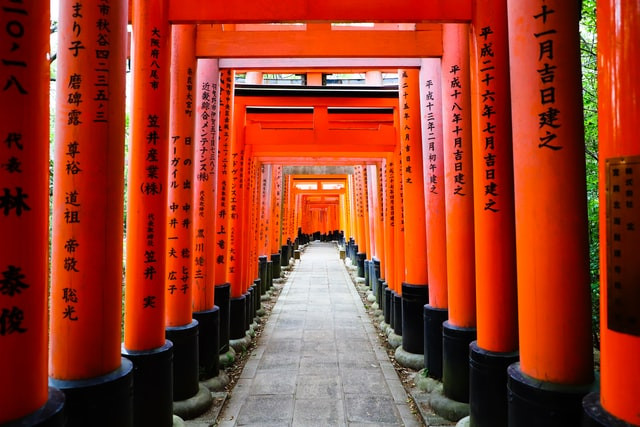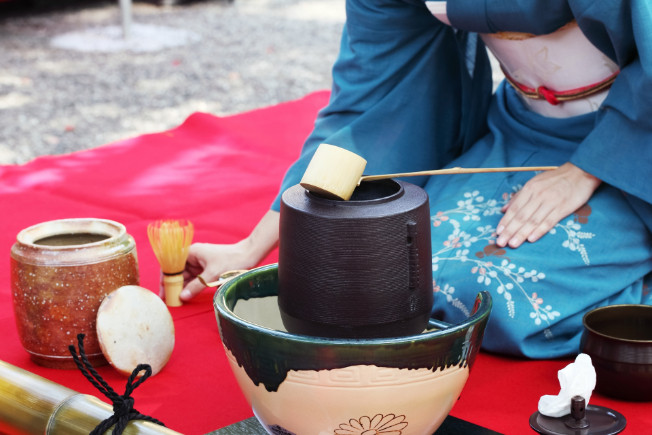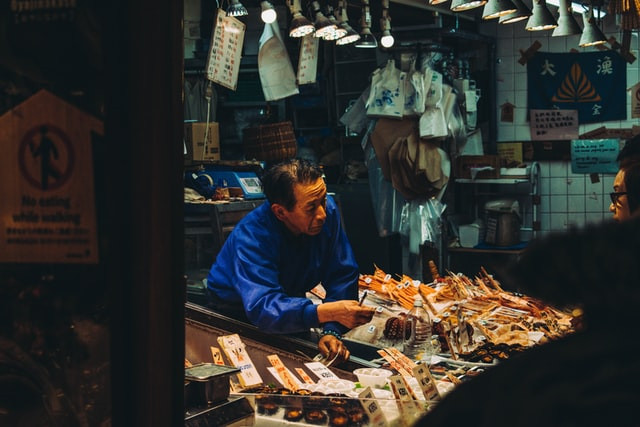Kyoto had been a center of political and religious focus for a long period of time. Modern Kyoto retains many places from past periods and there are truly so many places to visit and activities to do. If you do not know where to start, here are a few places to go.
Kyoto
Kyoto as Japan's Former Capital
Before Tokyo, Kyoto was the capital city of Japan. Discovered in 794 (during the Heian Period), it is considered as one of the oldest and biggest cities in the country. After more than a thousand years (794 - 1864), during the Meiji period, the transition of Japan into modernization and westernization moved the city's capital in Tokyo. Up to this day, many of the country's locals still regard Kyoto as Japan's capital city because of Japan's deep history and culture there.
※ Ancient History, "Heian Period"
The Abundance of Historical Sites
One of the oldest cities, one cannot deny that Kyoto houses many historical sites, numerous shrines, and temples, a rough estimate of 1,600 Buddhist temples and 400 Shintō shrines. Kyoto is considered as the cultural capital of Japan because it represents the country's culture in and outside of Japan. That is why Japan went great lengths to preserve the city's districts and establishments. Moreover, a lot of UNESCO heritage sites of ancient Japan are found in Kyoto.
※ Evangelical Mission in Solidarity, "A wide horizon"
Writer's Pick
Places to Visit
Fushimi-Inari Shrine

Sightseeing in Japan with a tight budget? No worries, as the Fushimi Inari Shrine admission is free and open for everyone. The entrance of Fushimi Inari is located at the base of the mountain. It is one of the most unique and important shrines across Japan and a frequently visited Shinto (nature-based Japanese religion) shrine in the country. It boasts 10,000 torii gates and has more than 30,000 sub-gates linings donated by different individuals, organizations, and establishments. The gates represent the entrance into sacred space, so when you walk under it, it means you are passing the sacred ground. The shrine is used to honor and pray to Inari (rice god) for a bountiful harvest, and the foxes guarding the gates act as the messenger.
※ Fushimi Inari Taisha, "FAQ"
Kyoto Imperial Palace
Like the Fushimi Inari Shrine, the Kyoto Imperial Palace entrance is free. The Japanese Imperial family resided in the palace before moving to Tokyo, the new capital of Japan in 1868. Though visitors cannot enter the buildings, you can tour around the palace grounds where other historic sites and tourist attractions are located. Some are the Kaninnomiya Mansion, where nobles formerly resided, shrines, and the park full of beautiful trees and plants where the palace is located.
Read more about the Kyoto Imperial Palace.
Kyoto Imperial Palace and its rich history
Ginkakuji (Silver Pavilion)
Compared to the first two places mentioned, Ginkakuji has an admission fee of 500 yen. Just like the Kyoto Imperial Palace, visiting the interior is restricted; you can only tour around the villa where the silver pavilion is which houses a statue of Kannon (goddess of mercy). There are also temple buildings like the Togudo that you can explore, beautiful, well-kept gardens like the sand garden, and the moss garden around the villa.
※ City of Kyoto and Kyoto City Tourism Association, "Ginkaku-ji Temple(The Silver Pavilion)"
Gion

Gion, also known for Gion Matsuri, is a district in Kyoto known for its Geisha. Geisha are Japanese women that perform the ancient way of Japanese singing and dancing. In this district, you can find a famous corner known as "Gion Corner," where most tourists watch geishas perform. It has an admission fee of 3,150 yen, but you can get a discount if you have an online coupon. There are only two shows (Geisha performance) available per day, so make sure to make reservations. The district is also filled with restaurants, teahouses, and scenic areas where one can enjoy dining, tea-sipping, and sightseeing. Also, the district has different shrines and temples that you can explore in addition to geisha performances.
※ Gion Corner - Kyoto Gion Yasaka Hall, "Gion Corner's Programs"
Many Others...
There are a lot of other historical and heritage sites, shrines, and tourist spots found in Kyoto that you would surely want to explore like the Nijo Castle, Kinkakuji Golden Pavilion, and the Kyoto National Museum. It will definitely take a long time to get the full feel of Kyoto so it’s no wonder that people visit this city multiple times and always have new places to go.
Experiences and Activities to Try!

Dress up in traditional Japanese wear
There is nothing quite like wearing the kimono, the traditional garment of Japan, and walking the streets of Kyoto, the cultural capital. For those who wish to do so, there are many shops in Japan offering that experience! Or you can choose a yukata in the summer and participate in a festival!
But how about taking it a step further? How about becoming trained in the ways of historical and cultural figures of Japanese society?
Samurai are Japanese warriors that yield Japanese swords called the katana. If you want to experience authentic samurai for a day, you can always go to Kyoto's different samurai academies. These academies allow their students, under the guidance of an expert samurai instructor, to learn how to properly handle a katana and put on their armor. People can also sit back and relax while watching a show where samurais and ninjas spar and compete. By the way, learning the ways of the ninja is also another option in Kyoto as well!
If you want to become a geisha or a maiko for a day, there are various stores and studios in Kyoto where they can transform you into a geisha. These studios offer to photograph you with your geisha and maiko makeover to serve as souvenirs during your stay in Japan. They have skilled makeup artists that will transform you into a beautiful geisha. Some even let you walk the streets of Kyoto too, and enjoy a show featuring geishas in teahouses, dinner and entertainment shows, and theatres in Kyoto.
Tea Ceremonies
In Japan, drinking tea or conducting tea ceremonies are done to have an alone and quiet time to know and connect with the people you are drinking with. Kyoto is where tea ceremonies are born, and hence, it has a lot of tea ceremony schools (old and new) and establishments where you can learn how the Japanese conduct their tea ceremonies. They will show you the tea making process and how to present your tea beautifully and artistically, an activity suitable for foreign families and children looking for an exciting experience to learn. You can choose to attend a tea ceremony where an apprentice geisha (maiko) lead a session and option to take souvenir photos. This is yet another experience where you can wear the traditional Japanese kimono while the tea ceremony is learned—a fun way to learn and take a sip of this famous tea.
Visiting Old Japanese Districts

Kyoto has a lot of old districts and establishments that has been preserved during the Meiji period that you can visit. One example would be Nishiki Market in downtown Kyoto; for 400 years, it has housed over 100 stalls offering both old and new local cuisines. Another is Saga-Toriimoto Preserved Street in the Arashiyama District, a street lined with traditional houses from the Meiji Era. It’s a lot less crowded than the other famous attraction at Arashiyama - the bamboo grove! There are a lot more districts that you can visit while in Kyoto like Gion in the Southern Higashiyama District where the geisha entertain or the Central Kyoto area where you can find a lot of attractions like the Nijo Castle.
※ The Kyoto Project, "The Kitchen of Kyoto: Nishiki Ichiba"
There are also many other cultural experiences you can have, such as creating traditional items, such as a fan or pottery, or making traditional Kyoto dishes, or learning traditional skills such as flower arrangement. The opportunities are endless!
Summary
Kyoto is a city that witnessed Japan's transition into a country that we know of today. The city houses many historical and heritage sites, temples, shrines, districts, and tourist spots where one can surely learn about Japan's history, cultures, and traditions while enjoying it. There are also a lot of activities and events that one could participate in while in Kyoto. See it for yourself! Come, walk, and tour Kyoto while in Japan!








 (2).png)




.jpg)





.jpg)












